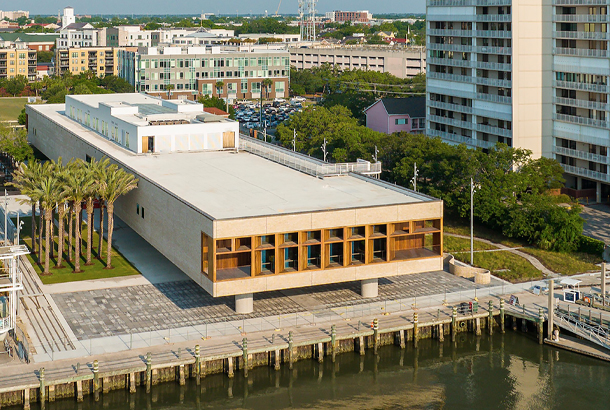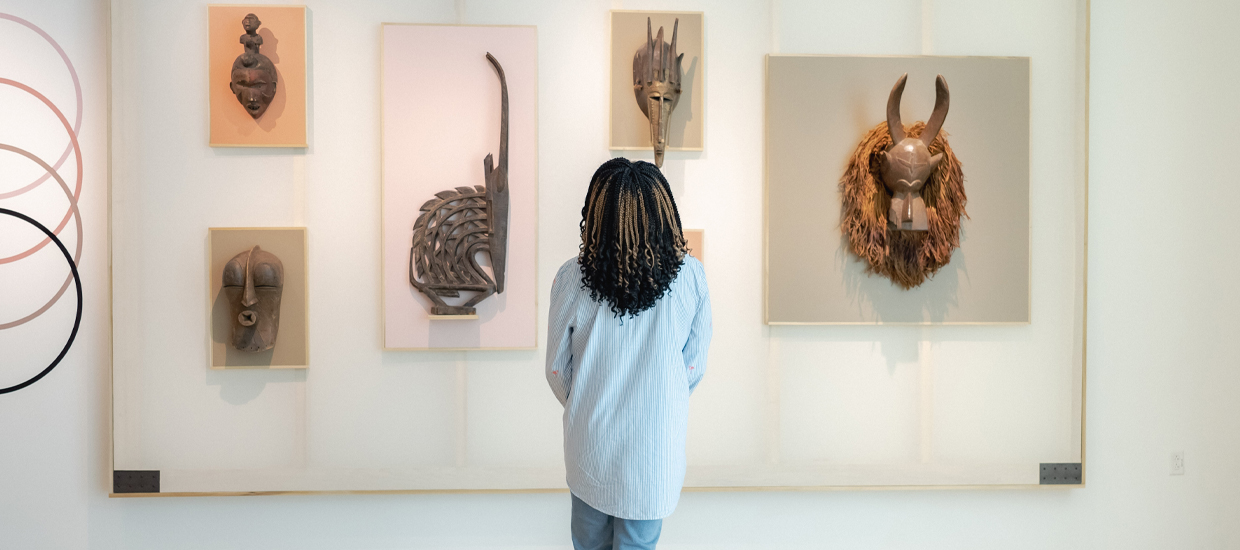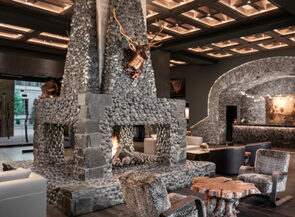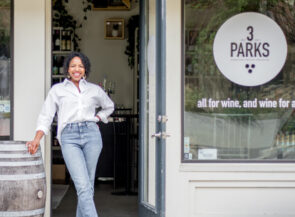The International African American Museum has been 23 years in the planning, but centuries in the making. The landmark IAAM, on Gadsden’s Wharf in Charleston, South Carolina, features nine permanent exhibitions (plus the forthcoming Special Exhibitions Gallery) that focus on the triumphs and traumas of the global African diaspora. The location is an essential element of the museum’s power, as historians estimate that nearly half of the enslaved Africans brought to America came ashore in Charleston.
“So many African Americans can potentially trace their ancestry right back to Gadsden’s Wharf,” says Martina Morale, IAAM’s director of curatorial and special exhibits, who oversaw the acquisition of the museum’s more than 150 artifacts, 30-plus works of art, and nearly 50 films and interactive digital interfaces. She cites the Transatlantic Gallery as an example of how the African American historical experience is conveyed: Eight video screens immerse viewers in scenes that span hundreds of years, from precolonial West and West-Central Africa to modern Black diasporas. As a whole, the exhibitions cover a wide range of geography and history; the Atlantic Worlds Gallery, for example, explores the connections between Africa, Europe, and the Americas, while the Gullah Geechee Gallery hones in on Lowcountry culture.

The innovative approach is evident outside as well. The museum hovers 13 feet above the ground, on 18 pillars, to avoid building directly on top of hallowed ground. Beneath and around the structure is the public African Ancestors Memorial Garden, which landscape architect and MacArthur Fellow Walter Hood designed with various African and African American customs in mind. (For instance, the Sweetgrass Field pays tribute to Lowcountry basket-weaving traditions.) Closer to the water, the Tide Tribute installation features hundreds of etchings of human bodies on the floor, mirroring the claustrophobic conditions on the ships that brought the enslaved into Charleston. The concrete carvings fill with water as the tide rises, conjuring the effects of a reflecting pool.
Many visitors will be able to reflect directly upon their personal connections with the past, thanks to the museum’s Center for Family History, which is available to assist with genealogy research. “You’re going to have visitors that are descendants of the slaveholders and descendants of the enslaved,” says Dr. Shelley Murphy, the center’s coordinator for genealogy education. She acknowledges the process can be painful but points out that it serves IAAM’s greater purpose—after all, she notes, when we call out the names of our ancestors, “they’re being remembered.”




